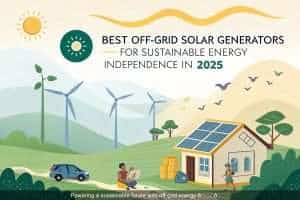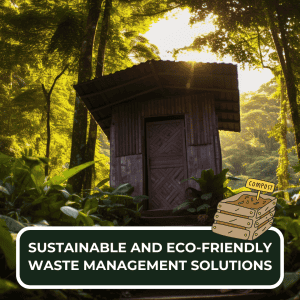Creating Sustainable Communities In Latin America And The Caribbean
Rapid urban growth strains cities across Latin America and the Caribbean.
From Bogotá to Buenos Aires and Mexico City, millions face pollution, shrinking green spaces, and expanding informal settlements. According to UN-Habitat, 81 percent of the region’s population, some 539 million people, now lives in cities. One in five individuals, roughly 110 million people, resides in informal settlements marked by inadequate housing and poor services.
Half of the world’s population lives in cities today. By 2050, that figure could reach 70 percent. These regions already face significant challenges, from housing shortages to climate vulnerability. The 2022 poverty rate reached 26 percent, with projections showing slight declines to 25 percent by 2024, according to data from ECLAC and UNDP.
This guide explores practical steps toward building the sustainable communities Latin America and the Caribbean need for a resilient future. Readers will discover how renewable energy projects are transforming Colombia and Argentina, or why eco-districts strengthen resilience against natural disasters. https://www.youtube.com/watch?v=ZTeywQ_uhuY shows how these solutions create smarter cities across the region.
Key Takeaways
By 2050, 89% of Latin America and the Caribbean’s population may live in urban areas, straining housing, infrastructure, and basic services.
Only 43% of residents have easy access to public transportation, limiting economic mobility and supporting the need for improved urban planning.
Community-led renewable energy projects in cities like Buenos Aires and Bogotá reduce greenhouse gas emissions and boost resilience against climate change.
Over 26% of the region’s urban population lives in poverty or extreme poverty, making social inclusion a key focus for sustainable city initiatives.
Strong public-private partnerships and local education programs are critical strategies for securing funding, building resilience, and fostering lasting change across communities.
Key Principles of Sustainable Communities
Sustainable urban development balances growth with the health of both people and the natural environment. Strong community participation helps manage resources, reduce greenhouse gas emissions, and create resilient cities throughout the region.
Renewable energy adoption
Solar panels and wind turbines now power many eco-districts across Latin America and the Caribbean. Cities such as Buenos Aires and Bogotá use these systems to cut down on greenhouse gas emissions while providing cleaner energy for growing populations.
Colombia announced a net zero target at COP26, along with a nationally determined contribution aiming for a 51% reduction in greenhouse gas emissions by 2030. As of 2024, Colombia’s renewable electricity generation capacity stood at 14.3 GW, with solar power growing fast. According to Chambers and Partners, solar projects for centralized generation reached a 6% share of Colombia’s 20 GW total installed capacity in the past year.
The Emerging and Sustainable Cities Initiative works with 55 urban areas in the region. This program helps each city reduce its carbon footprint through renewable energy solutions.
Colombia launched a $40 million energy transition plan in October 2024, focused on shifting away from fossil fuels through clean energy projects and electrification of transport.
Community-led projects drive much of this progress in sustainable cities. Residents help install solar roofs or support small-scale hydropower schemes that bring electricity to informal housing zones. These efforts improve air quality, make public spaces safer, and offer an answer to urbanization pressures common throughout Central America and South America.
Sustainable urban planning
Sustainable urban planning stands at the center of sustainable development in Latin America and the Caribbean. Cities across this region saw rapid urbanization, climbing from 62% in 1980 to 81% by 2011. Projections show this will hit 89% by 2050.
Urban sprawl leads to increased slum populations. Over one billion people globally now face these conditions, set to grow by two billion more within thirty years.
Only about 43% of residents can reach public transport easily. This lags behind global averages and limits economic mobility for millions. According to a 2023 study published in the journal Sustainability, Latin America faces significant focus on the social inequality of mobility in urban areas.
Organizations like the Emerging and Sustainable Cities Initiative push cities towards green building standards, improved infrastructure, renewable energy use, and community-led design. Projects such as eco-districts in Buenos Aires and Bogotá focus on regenerative practices that connect nature with city life. These initiatives promote inclusive participation from indigenous peoples and nonprofits.
Local governments now work alongside communities to protect cultural heritage sites recognized under UNESCO World Heritage guidelines. They create new green corridors for healthy transport options like public transit or cycling paths. Climate change adaptation remains a top goal. Integrating smart technology supports better risk management against disasters common in fast-growing regions like Santiago or Santo Domingo.
Cities have the capability of providing something for everybody only because, and only when, they are created by everybody. , Jane Jacobs
Community-based resource management
Thoughtful urban design strategies often succeed when local communities lead the way. Community-based resource management thrives through partnerships among city governments, nonprofit organizations like UN-Habitat, and residents living in cities and informal settlements.
In Latin America’s growing urban population centers, Indigenous communities and new arrivals shape decision-making about land use, water sources, transport systems, and green spaces. These collaborations improve housing conditions while meeting Habitat III goals for creating sustainable cities and communities.
According to a 2024 report from the World Economic Forum, strong private-public partnerships in the region are often community-led, centering on local stakeholders directly affected by problems and solutions. This empowers them to become effective project management leaders.
Eco-districts in metropolitan areas such as Bogotá use cooperative models to manage energy efficiency projects. They support electrification initiatives under Sustainable Development Goals by 2030. Local leaders organize efforts that restore degraded land or develop quality public infrastructure with funding from partners like the Inter-American Development Bank.
These integrated strategies do more than conserve resources. They also create jobs within the community while addressing economic inequality linked to rapid human migration across Brazil, Costa Rica, Chile, Ecuador, Honduras, Guatemala, and other nations in the region in the developing world.
Examples of Successful Initiatives
Innovative projects in urban sustainability are changing how people live in Latin America and the Caribbean. These efforts use smart city design, sustainable energy, and traditional knowledge to build resilient communities that support sustainable development.
Eco-districts in Buenos Aires and Bogotá
Fifteen eco-districts in Buenos Aires focus on organic food cultivation and bioclimatic building materials. These districts support a sustainable city model. Residents take part in workshops about ecological gardening, yoga, and community-based resource management.
Buenos Aires has integrated sustainability standards into neighborhoods like Barrio Mugica, Playón de Chacarita, Barrio 20, and Rodrigo Bueno. According to the city government, these projects incorporate thermal insulation, efficient lighting, rainwater harvesting systems, and photovoltaic solar energy generation. Sustainable mobility was promoted through bicycle paths, Ecobici stations, and access to public transportation.
These districts use renewable energy adoption and smart city solutions to strengthen their relationship with nature. They improve quality of life for locals.
In Bogotá, places like Triángulo Bajo, Manantial, and Triángulo Alto promote urban agriculture. Nearly 400 residents encourage the use of wood and other natural materials for new urban infrastructure. Support from the Emerging and Sustainable Cities Initiative helps these Caribbean cities build sustainable communities that remain replicable across the region.
Visitors can see firsthand how eco-friendly transport systems contribute to social inclusion within these neighborhoods. Bogotá has planted 80,000 new trees between 2008 and 2011, adding to over 1 million trees already in public spaces.
Eco-districts show that traditional knowledge combined with modern regulation can transform an urbanized region into a hub for sustainability.
Aquaponics and bioconstruction projects in Mexico and Brazil
After exploring how eco-districts in Buenos Aires and Bogotá shape urban sustainability, the focus shifts to rural innovation.
Eco-villages across Mexico use aquaponics systems that blend fish farming with plant cultivation. La Senda Ecovilla in San Miguel de Allende, designed as a self-sufficient community, operates an aquaponics system combining tilapia production with vegetable cultivation. The system allows communities to recycle water and nutrients efficiently. Local aquaculture supports food security without relying on fossil fuel-intensive supply chains or synthetic fertilizers.
Residents of these eco-villages have seen resource use drop while local food production climbs. According to a 2023 article published in Frontiers for Young Minds, aquaponics systems use 90% less water versus traditional farming. Aztec civilizations in central Mexico invented an early form of aquaponics called chinampas, floating gardens in Lake Texcoco that combined fish waste with crop cultivation.
In Brazil, organizations like Eco Caminhos lead with bioconstruction projects that apply sustainable principles and prioritize renewable resources. This Nova Friburgo-based eco farm has been constructing with natural building techniques since 2015. Builders often choose materials like adobe, bamboo, and locally sourced timber to cut land degradation linked to traditional construction methods.
Instituto Terra, founded in 1998 by Lélia Deluiz Wanick Salgado and Sebastião Salgado, focuses on environmental restoration and sustainable rural development in the Rio Doce Valley. The organization has planted over 3 million trees from 293 species, transforming a degraded cattle ranch into a thriving Atlantic Forest reserve. Their sustainable architecture integrates with nature, remodeling old barn structures for administration offices.
These efforts strengthen community resilience by reducing environmental impact and supporting the 2030 agenda for sustainable development in medium-sized towns. This model inspires others seeking practical solutions for inadequate housing while preserving world heritage sites nearby.
Challenges to Sustainability
Rapid growth strains city planning and weakens urban transport systems. Gaps in infrastructure and services make it hard for many communities to achieve effective mitigation or fair access to sustainable solutions.
Urbanization pressures
Latin America and the Caribbean face intense urbanization pressures. Urbanization soared from 62 percent in 1980 to 81 percent in 2011. Forecasts show this will hit 89 percent by 2050.
Nearly one in four city residents now lives in slum conditions. About 26 percent of the urban population endures poverty or extreme poverty. Sustainable transport and access to basic infrastructure remain significant challenges. Only a reported 43 percent of city dwellers enjoy convenient public transport options as of 2020.
According to data from the World Bank published in 2024, in 2023, 81.87 percent of the total population of Latin America and the Caribbean lived in urban areas and cities. One in five urban households in the region reside in informal settlements, which often have much higher densities than a city’s average.
City planning struggles to keep up as millions migrate each year from rural areas into crowded districts. New growth often happens without adequate mitigation for housing shortages or equal access to services. Between 2000 to 2030, the region’s urban land exposed to flooding is expected to increase by 2.7 times its current size, further exacerbating vulnerabilities.
Expanding sustainable communities like ecovillages, strengthening capacities within local governments, and investing in reliable public transport systems can help ease these rapid changes across urban land throughout Latin America and the Caribbean.
Limited access to funding
As urbanization pressures continue to reshape cities across Latin America and the Caribbean, limited access to funding emerges as a major obstacle for sustainable communities.
Many city governments struggle with shortages in financial resources needed for projects like renewable energy or green infrastructure. According to the Inter-American Development Bank, infrastructure gaps in Latin America and the Caribbean exceed $250 billion annually. The Emerging and Sustainable Cities Initiative, which operates throughout the region, supports 55 cities working on carbon reduction action plans but faces constant budget constraints.
Over 26 percent of the urban population lives in poverty or extreme poverty, making it even harder to secure investments for sustainability initiatives. According to a 2024 report from IUCN, the Global Environment Facility approved almost USD 18 million to implement projects aimed at making fast-growing cities in Peru and Guatemala more sustainable and climate resilient.
Collaboration between local governments, financial institutions such as development banks, and civil society organizations plays a crucial role in finding solutions. Without these partnerships, many innovative ideas on sustainable urbanism stall before reaching residents’ homes or improving household income levels.
Strategies for Overcoming Challenges
Local leaders use data-driven tools to track urban challenges and guide community action. Smart planning helps boost household income while supporting sustainable communities across Latin America and the Caribbean.
Strengthening public-private partnerships
Public-private partnerships address tough urban challenges for sustainable communities in Latin America and the Caribbean. UN-HABITAT and ECLAC help drive these efforts by joining governments, businesses, NGOs, and residents to support resource-efficient projects.
According to the Inter-American Development Bank’s 2023/24 Infrascope report, the region has attracted more than $760 billion in private capital towards private infrastructure in the last 30 years. Brazil and Chile continue to lead the region with outstanding performance, followed by well-established markets such as Colombia, Uruguay, and Peru. Investment in PPP infrastructure has increased by more than 15% in Latin America and the Caribbean.
Recent collaborations have improved waste management systems and increased renewable energy options for growing cities. By 2030, Latin America and the Caribbean needs to invest $2.2 trillion in water, sanitation, energy, transportation, and telecommunications to expand and maintain infrastructure needed to meet the Sustainable Development Goals.
Pooling funds from both public programs and private enterprises increases household income opportunities while supporting local economies. These joint projects often train community members in skills like aquaponics or bioconstruction, making solutions more inclusive and practical. This cooperation shapes stronger social networks that are vital for lasting city development across the region.
Promoting education and local engagement
After building trust between government and businesses, communities gain the opportunity to strengthen their own voices.
Neighborhood workshops teach skills on waste reduction, solar panel use, and urban gardening. These activities bring people together and give them tools for change. Local schools set up programs highlighting sustainability topics like water conservation and recycling best practices.
Nonprofit organizations often partner with these schools to lead activities in parks or community centers. This approach ensures that both children and adults understand how sustainable choices shape daily life.
Well-informed residents become active leaders who help create truly sustainable communities. Community engagement increases environmental stewardship at every level, making neighborhoods across Latin America and the Caribbean cleaner and more vibrant. The Emerging and Sustainable Cities Initiative promotes capacity building and strengthens institutional frameworks to support local action.
Impact of Sustainable Communities on the Region
Sustainable communities in Latin America and the Caribbean shape daily life through local participation and smart use of resources. Clean power projects, recycled materials, and shared spaces drive these changes across cities and villages.
Environmental benefits
Eco-districts in cities like Buenos Aires and Bogotá lead the way by using green buildings and promoting organic food gardens. These projects support sustainable urban agriculture while helping reduce climate vulnerability for neighborhoods with high populations of urban poor. Residents get involved in local projects, often managing resources together to encourage climate resilience and lower carbon footprints.
Solar panels, efficient public transit systems, and rainwater harvesting all help improve air quality and manage waste better. According to a 2024 report from the development bank of Latin America and the Caribbean, 35% of CAF’s financing in 2024 went to initiatives promoting biodiversity protection, preservation of strategic ecosystems, and climate change adaptation and mitigation.
Community engagement increases environmental stewardship at every level, making sustainable communities across Latin America and the Caribbean cleaner and more vibrant. Sustainable transport methods like bike paths also help cut harmful emissions while supporting healthier lifestyles throughout these regions.
Social inclusion and economic growth
Building on environmental benefits, sustainable communities in Latin America and the Caribbean also drive social inclusion and economic growth. Around 26% of city dwellers live in poverty or extreme poverty across this region, which makes social integration a pressing challenge. The Emerging and Sustainable Cities Initiative works to address these needs by supporting urban poor populations through targeted programs aimed at both economic vitality and equitable access.
Community-driven projects like Villa 4 Álamos in Chile show how local involvement supports lasting change. Partnerships among governments, NGOs, and civil society groups boost job opportunities while fostering shared resources.
Growth in construction sectors creates jobs. A one percent rise can lift per capita GDP by about 0.07%. Intermediate-sized cities are expected to deliver 40% of regional GDP by 2030, proving that inclusive planning is vital for prosperity within sustainable communities.
According to the 2024 report from UNDP, despite setbacks since 2014, 2022 saw the region’s lowest poverty rate ever at 26%, with slight declines projected for 2023 at 25.2% and 2024 at 25%. Progress in social inclusion creates more resilient economies and strengthens the foundation for a sustainable future.
Conclusion
Sustainable communities in Latin America and the Caribbean stand stronger with smart planning, local partnerships, and renewable energy use.
Cities like Buenos Aires show how eco-districts transform urban life through green spaces and clean power. Projects in Mexico and Brazil prove that aquaponics and bioconstruction work well for both people and nature.
Even with growing urban pressures, public-private teamwork offers hope for lasting change. Simple steps such as community-based resource management help tackle challenges fast and at scale.
Every step shapes a brighter future for all families across the region.
FAQs
1. What makes sustainable communities important in Latin America and the Caribbean?
Sustainable communities are vital for protecting natural resources while improving residents’ quality of life in a region where nearly 81% of the population lives in cities. This approach is critical for creating healthier living spaces and addressing pressing climate threats, such as the increasing frequency of Category 5 hurricanes in the Caribbean. Organizations like the Inter-American Development Bank support these initiatives to manage rapid urbanization and build resilience.
2. How do sustainable communities address housing needs?
These communities provide affordable housing by using eco-friendly building materials like locally sourced bamboo and energy-efficient designs that can lower utility costs by up to 30%. For instance, the Bambu Social project in Colombia utilizes guadua bamboo to construct durable, low-cost homes, reducing the carbon footprint while addressing housing shortages.
3. What role does community participation play in sustainability?
Active participation from local residents in the planning process, a model often supported by organizations like Comunidades Sostenibles, is essential for ensuring the long-term success of waste management and water conservation projects.
4. Can sustainable communities boost local economies?
Yes, they stimulate local economies by creating jobs in green construction and renewable energy sectors, such as solar panel installation, which is a growing industry in the Caribbean. These communities also foster economic self-sufficiency by supporting local businesses and farmers’ markets, a practice that reduces transportation emissions and keeps revenue within the community.








